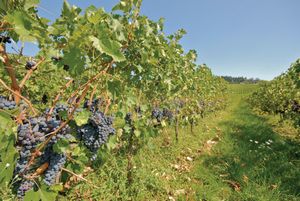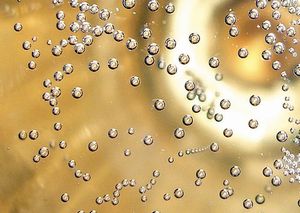It must be hard to be an excellent red wine but get virtually ignored because your ‘big brothers’ are so well known. This is the dilemma faced by the Barbera, Dolcetto, and Roero wines of the Piedmont region that are so overshadowed by the Barolo and Barbaresco wines also produced there.
BARBERA
At one time, the barbera was the most widely planted grape in all of Italy. It still accounts for more than 50 percent of the DOC/DOCG red wine production in the Piedmont. But the barbera was usually regarded there as sort of a ‘filler’—a grape to plant if your vineyard was not suitable for the better known nebbiolo grape. The wines made from it were suitable as house wines or wines to be served in the least expensive eateries. Over the last few years, Barberas, especially those from Alba, have started to come into their own. As with many wines from the Piedmont, this is due to improvements both in the vineyards (fewer plants per hectare and fewer grapes per plant) and in the cellars (modernized and consistent winemaking techniques).
The barbera grape has a lot of color and a high natural acidity. These characteristics are combined with a rather low level of tannins (the aspect of the grape that makes your mouth pucker and feel slightly dry). In Barbera d’Alba, you find a wine that is well suited for accompanying many foods. Known for its berry/cherry flavor, it is crisp and refreshing, rather than mouth-drying like most red wines from the Piedmont. Some winemakers are even experimenting with aging their Barbera d’Alba in French oak barriques, the 225 liter barrels that have grown so popular. This allows the wine to acquire some of the tannins the grape itself lacks, thereby making the wine more similar to other reds from the area, while remaining less expensive.
DOLCETTO
Seven distinct wines are made in the Piedmont region from the dolcetto grape. The Dolcetto d’Alba, d’Diano, and di Dogliani, named for their respective towns of origin, are the best known. But they are currently fighting an uphill battle for recognition. The grape’s name, dolcetto, looks like the word dolce (sweet). Since we live in a time when sweet wines are generally unfashionable, many potential drinkers simply turn away.
But it is the tannins that are pleasantly sweet, not the wine. The opposite of the barbera grape, the dolcetto grape has low acidity and pleasantly high tannins. Historically, it was used therapeutically, to treat people with weak stomachs.
This grape is the earliest of the red grapes in the region to ripen, and the wines produced from it mature the earliest as well.
The Dolcetto d’Alba is the best known of the group. Purists would have you know it is produced from grapes grown on the Langhe hills, not the Roeros. This wine is dry, medium-bodied and usually harmonious and well balanced. Look for the aroma of black pepper and red berries when you try it. It may be the perfect wine to serve with the typical Piedmont appetizer platter of six or more dishes.
Dolcetto d’Diano is made nearby. This wine can be distinguished from the d’Alba in a blind tasting because it has an intense flavor of almonds at the end. Many people find it slightly more robust and fruity than the other Dolcettos.
There are references to the Dolcetto di Dogliani as far back as the 15th century. Dogliani is south of the other Dolcetto-producing areas. The wines made there are more concentrated and need some time to develop.
ROERO
On the other side of the Tanaro River at Alba, you find the Roero, a little-known zone that, in the last few years, has produced extraordinary wines that have been enthusiastically received. The winemakers in this area base their wine on the notoriously difficult nebbiolo grape—the source of both Barolo and Barbaresco—and add 2 to 5 percent of a local white grape, the arneis. In this way, they make a concentrated wine with an intense fruity character that can be enjoyed without excessive aging. When it is young, the Roero is ruby red and its bouquet reminds you of violets, raspberries, and peaches. Under Italian wine laws, this wine can be drunk after June first of the year after the grapes are harvested. But the wisest winemakers keep it in wood for a year or longer to make a more elegant wine. This is not a wine that can or should be aged for a long time, but it is rich in aromas and complexity.
Barolo and Barbaresco, are (justifiably) better known. Barolo is known as ‘the king of wine and the wine of kings’. But, for the rest of us, who tend to drink a bottle of wine the same day we buy it, the Barbera, Dolcetto, and Roero wines of the Piedmont region are an excellent choice.








